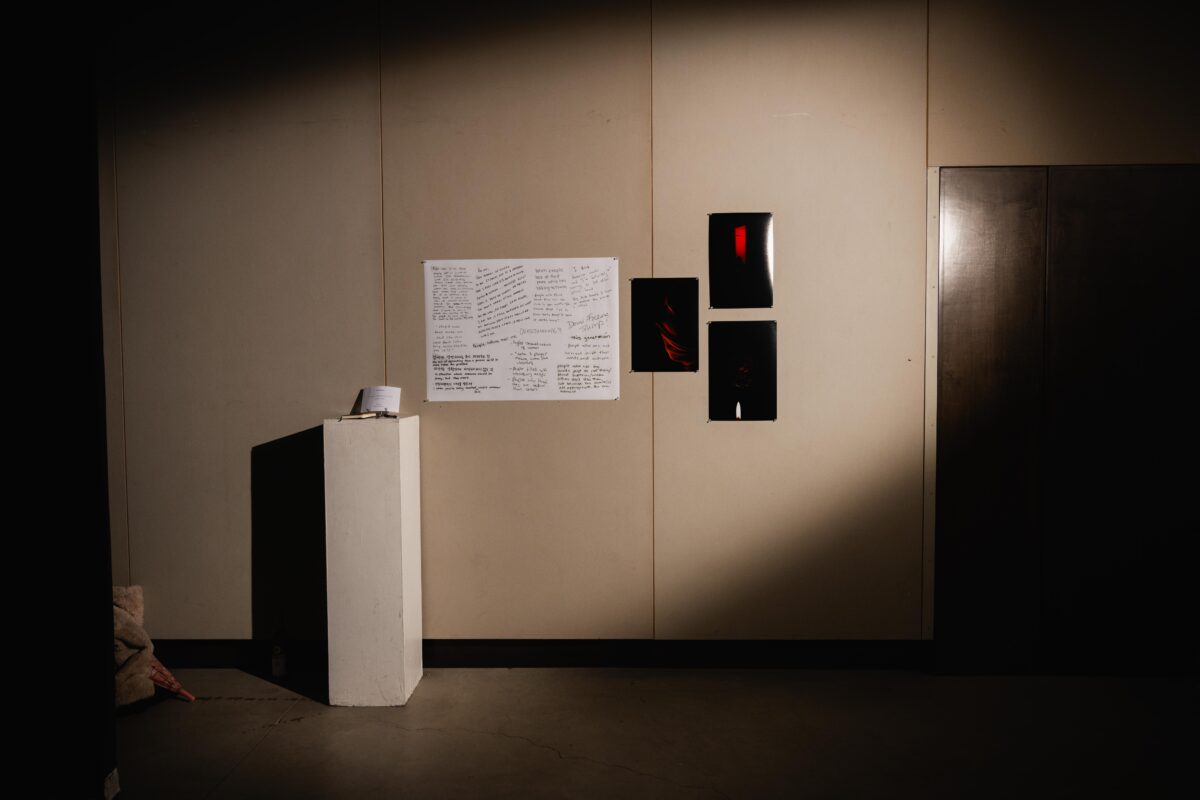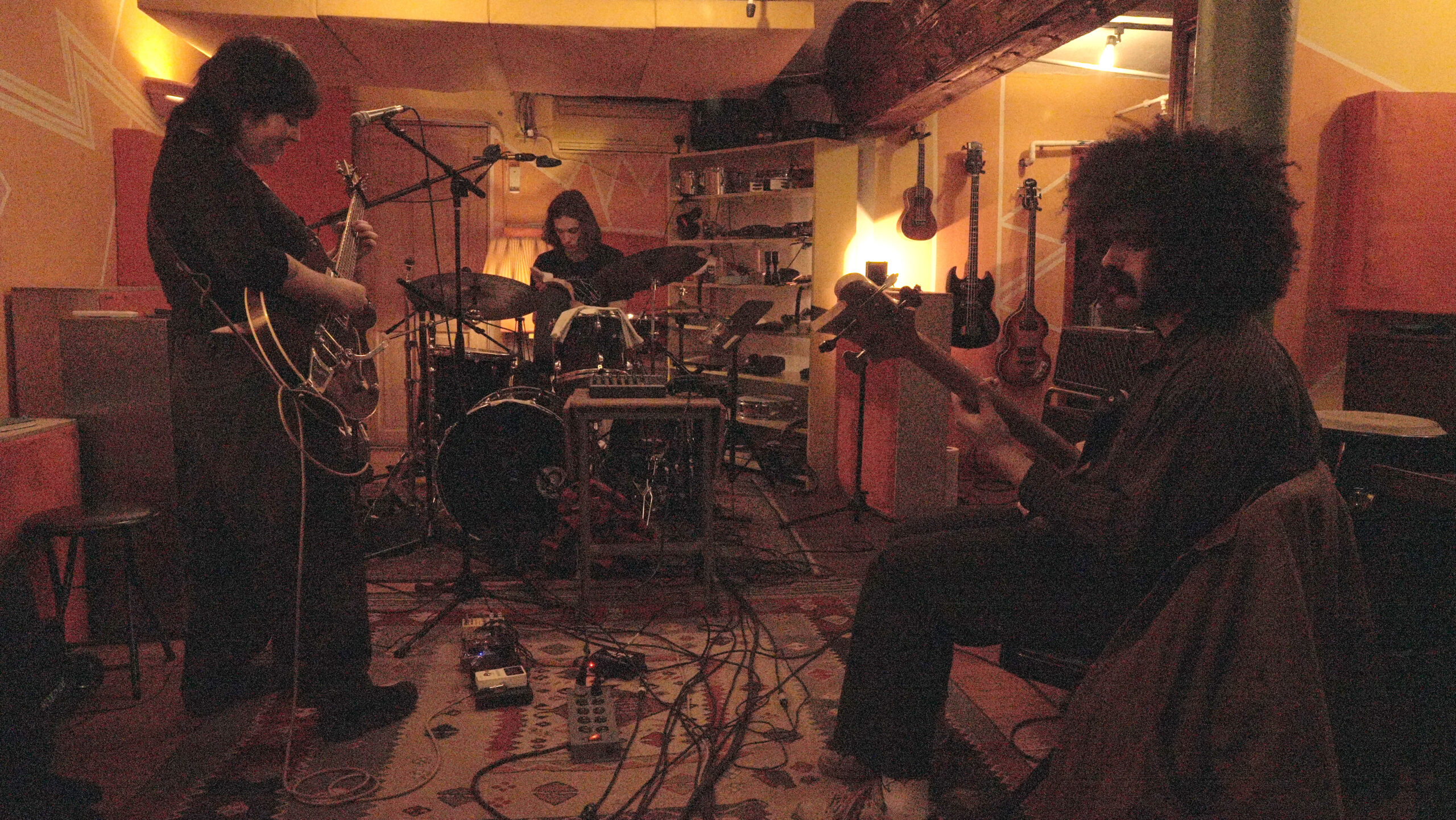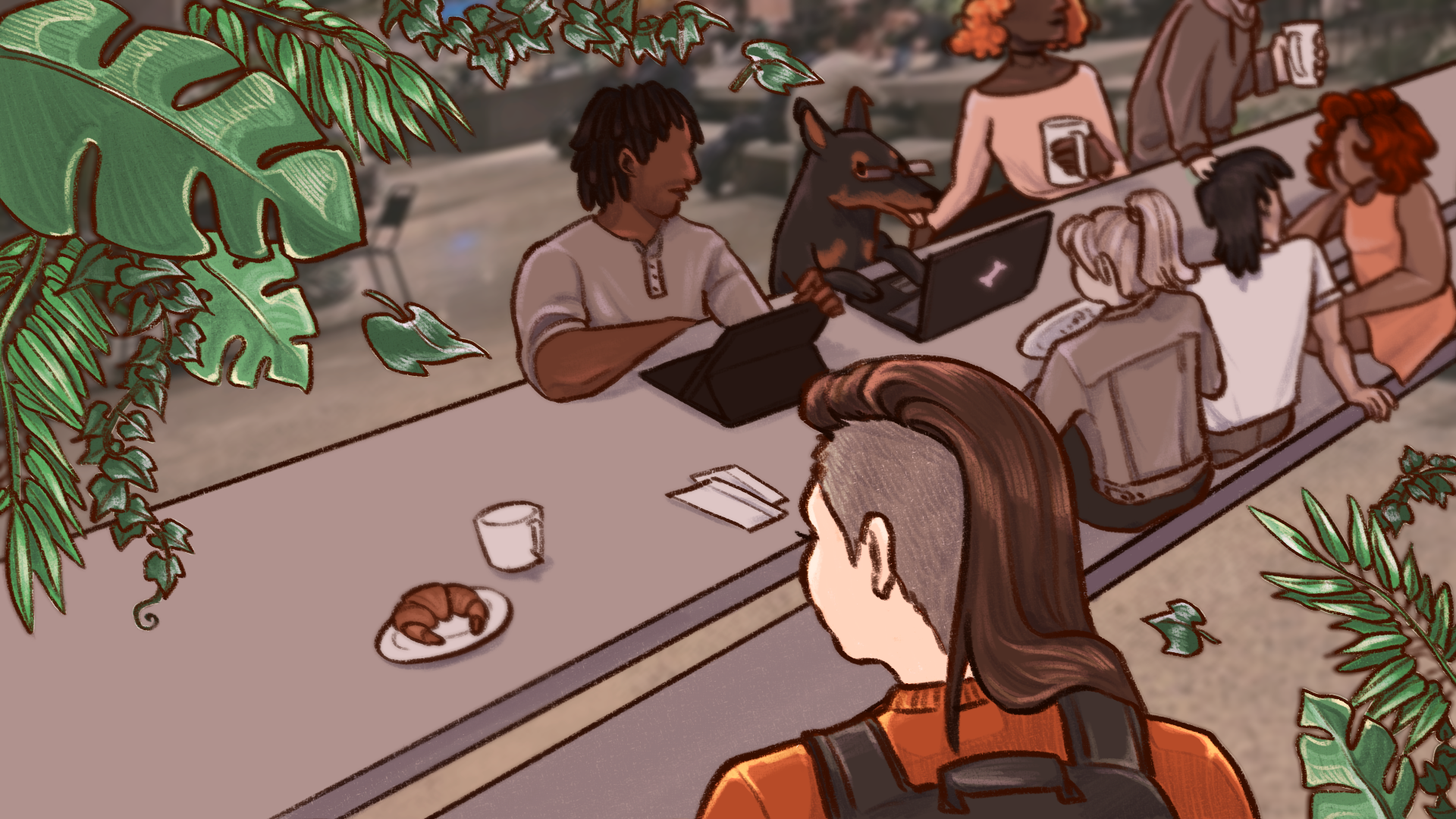Students from Parsons School of Design’s MFA Photography program took over several floors of the Sheila C. Johnson Design Center on Friday, November 22, for the program’s annual MFA Photo Open Studios. The event was a chance for New School community members and the public alike to view in-progress thesis projects and speak with the student artists behind the work.
The show featured work by more than a dozen photographers working with a wide variety of photographic processes and techniques including medium format film, video, cyanotype, and other nontraditional printing methods. In Azusa Pan’s piece “This is a Box,” a monitor sat mounted to the wall inside of a small paper box, forcing viewers to put one eye up to a small hole in its side in order to see the video inside. Students also played with more intangible restrictions. Radha Datta’s images were all taken inside of museums, toying with themes of copyright and profit.
On the fifth floor, second year MFA student Prince Nwaohuocha presented part of his thesis “Nwa ala’gnwa / Son of Soil,” a project centered around Igbo proverbs and traditions. Using his mother and brother as models, Nwaohuocha’s medium format images capture their relationship with one another and the Earth. “I connected two prints, one of a mother and a son, and another image of the son’s chest in order to make allusions between the land and the people, and the soil and the skin,” Nwaohuocha said. In a third print, his brother’s chest, so tightly framed as to be nearly abstract, is bathed in a warm glow, highlighting the creases and indents of his skin. Neatly sectioned text in the photo’s lower left-hand corner reads: “When an Igbo man is born, the umbilical cord that once connected him to his mother is taken and wrapped around the seed of a fruit tree and buried in the ground in the land of his father.”

“Son of Soil” is just one part of Nwaohuocha’s thesis, titled Ilulu. In February, he will travel to Nigeria to capture images for the rest of his thesis, his first time back in 20 years. Nwaohuocha sees the trip as a homecoming, and hopes the project will allow members of the Nigerian diaspora to reconnect with their roots.
“Son of Soil” also exists in response to the work of British anthropologist Northcote W. Thomas, who conducted research in Nigeria in the early 20th century and whose photographs were used to paint a picture of Nigerian society as primitive and tribal. “I’m creating this project as a counterargument to that,” Nwaohuocha said. “Those images still exist in The British [National Archives] and The British Museum, so I want to be able to create something that can stand alongside them and reoffer my people back our personhood and our dignity. It’s like photographic reparations.”

On the fourth floor, inside one of the Design Center’s photography studios,Madison Lanier’s display was centered on her journal. For her thesis project on female rage, she used her journal as a canvas, asking female strangers and friends to write a few sentences detailing what they were feeling angry about and why.
“It got really personal,” Lanier said. “I don’t think that that’s really a question that people go around talking about, you know?” Lanier’s journal sat on a pedestal to the side of her gallery space below a printed collage of collected responses, and a cup of pens invited attendees to write their own responses to her prompt. “When people look at their phone when I’m talking to them,” one response read. Below it were a multitude of other answers, including “the hyper-sexualization of women,” “people who are not honest with their words or actions,” and a wealth of responses about the recent presidential election.
Accompanying Lanier’s journal were three photo prints. In one, the outline of a face is seen screaming masked behind a piece of red cloth. In another, a burning rose sits in the center of the canvas illuminated by a candle flame. “It’s a symbol of beauty but also rage,” Lanier said. “It’s like silent rage, delicate rage, what’s inside and what we feel like we can’t say out loud, but I think we should be able to anyways.”
One floor below, second-year MFA student Lexi Hide’s self-portrait series When All You’ve Got is Yourself was simultaneously unsettling and strangely comforting. “What I was trying to do last semester was make uncanny or uncomfortable photos,” Hide said. Using herself as a model, Hide produces images that unfold in strange and awkward ways, detailing the intricacies of the solitary human experience. Hide’s first image, a bloody self-portrait in a panda-themed Tokyo laundromat, exemplifies this surreal quality. The bright and cheerful setting contrasts Hide’s body, posed in the center of the image, blood staining her T-shirt and socks as she lifts a pink laundry basket covered in panda stickers.
Hide said that sometimes, when faced with a creative block, she takes sleeping tablets and then fights the drowsiness — a method that she says leads to a complete breakdown of her inner negative critic. “You can’t imagine negative outcomes which is why you come up with so many good ideas,” she said. Hide encourages everyone to try her method but warns that the lack of inhibition can become dangerous. “I would recommend,” said Hide, “but you have to put your phone away.”

Many of the show’s prints remain on display in the gallery rooms on the Design Center’s fifth floor, providing unique insights into the creative processes of the students in Parsons’ MFA Photography program and serving as a testament to the importance of viewing works in progress.








Leave a Reply